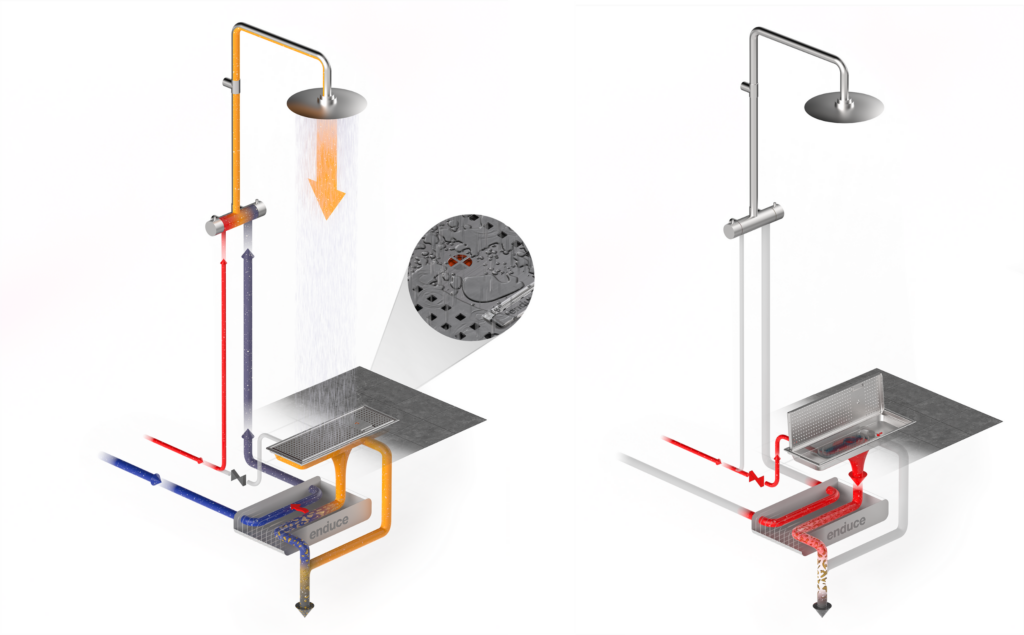How you design the shower area and where you position the shower room ventilation are important factors that influence how energy efficient and comfortable the shower experience will be.
With an open shower area, without effective shielding, as much as 5000 watts of shower heat can be lost to the environment. This corresponds to approximately 25 % of the total shower power, which means that you will have a less comfortable shower and the possibility to recover the energy effectively is limited.
If the shower area is designed with an effective screen, and correctly placed ventilation, the power losses are instead minimized to the order of 500 W, corresponding to about 3 % of the total shower power. The improvement provides a high comfort level and good conditions for efficient energy recovery.
In our value calculation, we define the shower area as follows:

An open shower area lack at least one shower wall or have the ventilation outlet in or directly above the shower area. In these cases, shower water evaporates into the surrounding air to an extent that causes a strong cooling effect on both shower water and body. The cooling effect obviously reduces comfort, and increases energy losses during showering - both with and without energy recovery technologies installed.Evaporated water from the open shower area transports the energy to room-temperature surfaces such as walls, floors, bathroom fixtures and ventilation systems, where the water condenses and makes surfaces wet and mirrors foggy, resulting in increased soiling and possible mould growth. After showering, the moisture slowly evaporates from the surfaces, and the energy transported to the surfaces during showering turns into ventilation losses that are difficult to recover.
An energy-optimized shower arealimits air and energy exchange in all directions during showering - greatly reducing evaporative losses from the body and shower space (from as much as 5000 W down to around 500 W), leading to a very comfortable and energy-efficient shower. The optimized shower location results in lower moisture loads on the bathroom and ventilation system, as well as good conditions for efficient energy recovery.
A traditional shower areawe define as an intermediate between the open, energy-hungry and uncomfortable shower area and the "optimized" one. Depending on the exact design of the shower area, as well as the location and dimensioning of the ventilation in the room, the power losses from the traditional shower area and body typically vary around 2500 W.

